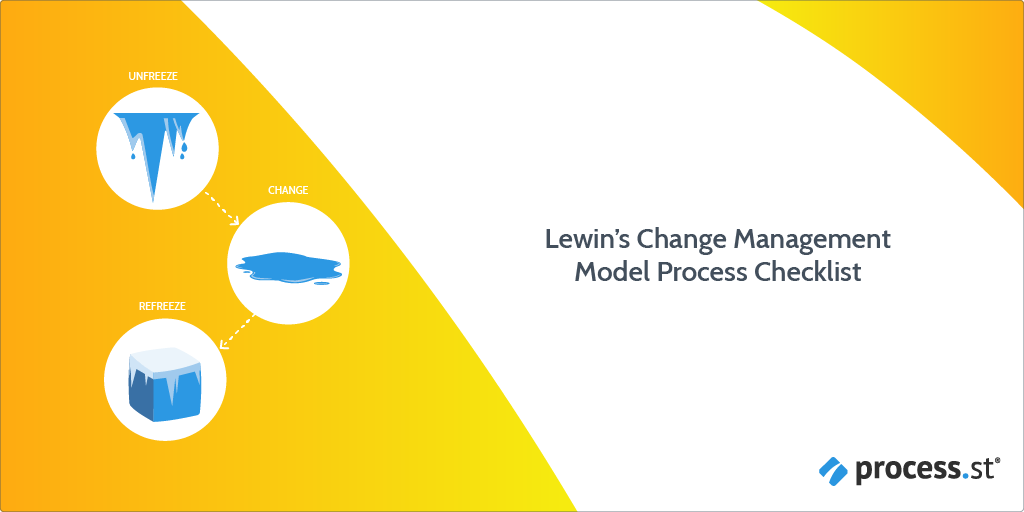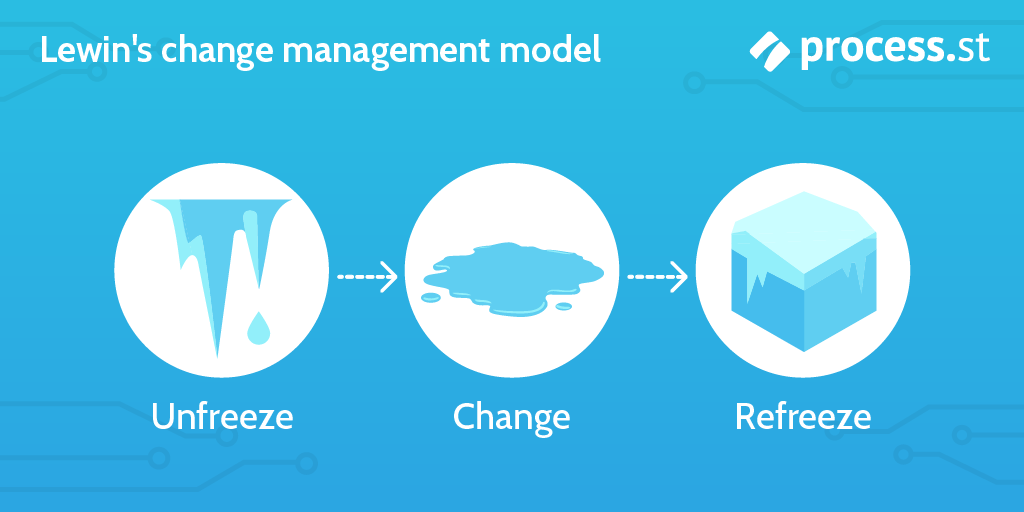Lewin's Change Management Model Process Checklist splits the process of change into three stages, which account for both the processes and the people of a company.
Lewin's Change Management Model: An introduction
Lewin's change management model was developed by Kurt Lewin in 1940. It is one of the most popular approaches to dealing with change. The model splits change up into three stages. In essence, the model breaks change up into bitesize chunks accounting for both processes and people.
The 3 stages in this model are:
- Stage 1: Unfreeze
- Stage 2: Make changes
- Stage 3: Refreeze
The model explains that there different forces influencing organizational balance and change. These forces are known as driving forces and restraining forces. When these forces are balanced in equilibrium, the organization does not change. To introduce change into this balanced system, driving forces need to be boosted and restraining forces need to be alleviated.
What's good about it
Lewin's model is great to implement when big company-wide changes are needed. The method is notable for uncovering hidden mistakes as every aspect of whatever you are changing can be analyzed.
What's bad about it
The unfreezing process operates on a large scale, meaning that Lewin's model can be difficult and time-consuming to enact. This isn't an issue when the changes to be implemented are large and so require a chunky time-investment. It is an issue though if you are dealing with smaller change.
Supporting massive change, there is the risk of alienating employees via drastically impacting their workflow. You need to be especially careful when bringing employees on board and maintaining enthusiasm during the unfreezing stage.
How to use this checklist
At the beginning of this checklist, you will be presented with a set of specialized questions given as form fields. You are required to populate each form field with your data.
The checklist is broken down into the three stages of Lewin's Change Management Mode:
- Stage 1: Unfreeze
- Stage 2: Make changes
- Stage 3: Refreeze
At the end of each stage, your supervisor/manager will review your work using Process Street's approvals feature. Features used in this template include:
- Stop tasks - To ensure task order.
- Dynamic due dates - To make sure your initiative is reviewed on time.
- Role assignment - To delegate tasks within your team ensuring your supervisors is appropriately assigned to the review tasks.
- Approvals - Tasks can be accepted, rejected and rejected with comments.




